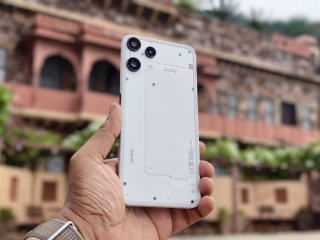- Home
- Science
- Science News
- Philae Lander Safely Anchored on Comet Surface: ESA
Philae Lander Safely Anchored on Comet Surface: ESA

The lander, named Philae, was launched from its mothership Rosetta on Wednesday as it orbited comet 67P/Churyumov-Gerasimenko, the climax of a 10-year-odyssey for the European Space Agency (ESA).
But during Philae's seven-hour descent to the comet, harpoons designed to anchor it failed to deploy, raising concerns the lander might drift back into space.
The ESA published an image on Thursday of the 100-kg (220-pound) lander - virtually weightless in its current environment - on the comet's bleak, rocky surface.
(Also See: Siding Spring Comet Bombarded Mars Sky With Meteor Shower: Nasa)
It said data showed the lander had twice bounced back into space after touching down on Wednesday, but then come to rest at around 1730 GMT.
Scientists hope that samples drilled out from the comet by Philae will unlock details about how the planets - and possibly even life - evolved, as the rock and ice that make up comets preserve ancient organic molecules like a time capsule.
Comets date back to the formation of the solar system some 4.6 billion years ago. Scientists suspect impacting comets delivered water to early Earth.
© Thomson Reuters 2014
Get your daily dose of tech news, reviews, and insights, in under 80 characters on Gadgets 360 Turbo. Connect with fellow tech lovers on our Forum. Follow us on X, Facebook, WhatsApp, Threads and Google News for instant updates. Catch all the action on our YouTube channel.
Related Stories
- Samsung Galaxy Unpacked 2025
- ChatGPT
- Redmi Note 14 Pro+
- iPhone 16
- Apple Vision Pro
- Oneplus 12
- OnePlus Nord CE 3 Lite 5G
- iPhone 13
- Xiaomi 14 Pro
- Oppo Find N3
- Tecno Spark Go (2023)
- Realme V30
- Best Phones Under 25000
- Samsung Galaxy S24 Series
- Cryptocurrency
- iQoo 12
- Samsung Galaxy S24 Ultra
- Giottus
- Samsung Galaxy Z Flip 5
- Apple 'Scary Fast'
- Housefull 5
- GoPro Hero 12 Black Review
- Invincible Season 2
- JioGlass
- HD Ready TV
- Laptop Under 50000
- Smartwatch Under 10000
- Latest Mobile Phones
- Compare Phones
- Vivo Y500 Pro
- Realme GT 8 Pro Aston Martin F1 Limited Edition
- Huawei Mate 70 Air
- Moto G57
- Moto G57 Power
- Motorola Edge 70
- Moto G Play (2026)
- Moto G (2026)
- MacBook Pro 14-inch (M5, 2025)
- Asus Vivobook S16 (S3607QA)
- iQOO Pad 5e
- OPPO Pad 5
- Noise Diva 2
- Noise Halo 2
- Acerpure Nitro Z Series 100-inch QLED TV
- Samsung 43 Inch LED Ultra HD (4K) Smart TV (UA43UE81AFULXL)
- Asus ROG Ally
- Nintendo Switch Lite
- Haier 1.6 Ton 5 Star Inverter Split AC (HSU19G-MZAID5BN-INV)
- Haier 1.6 Ton 5 Star Inverter Split AC (HSU19G-MZAIM5BN-INV)

















